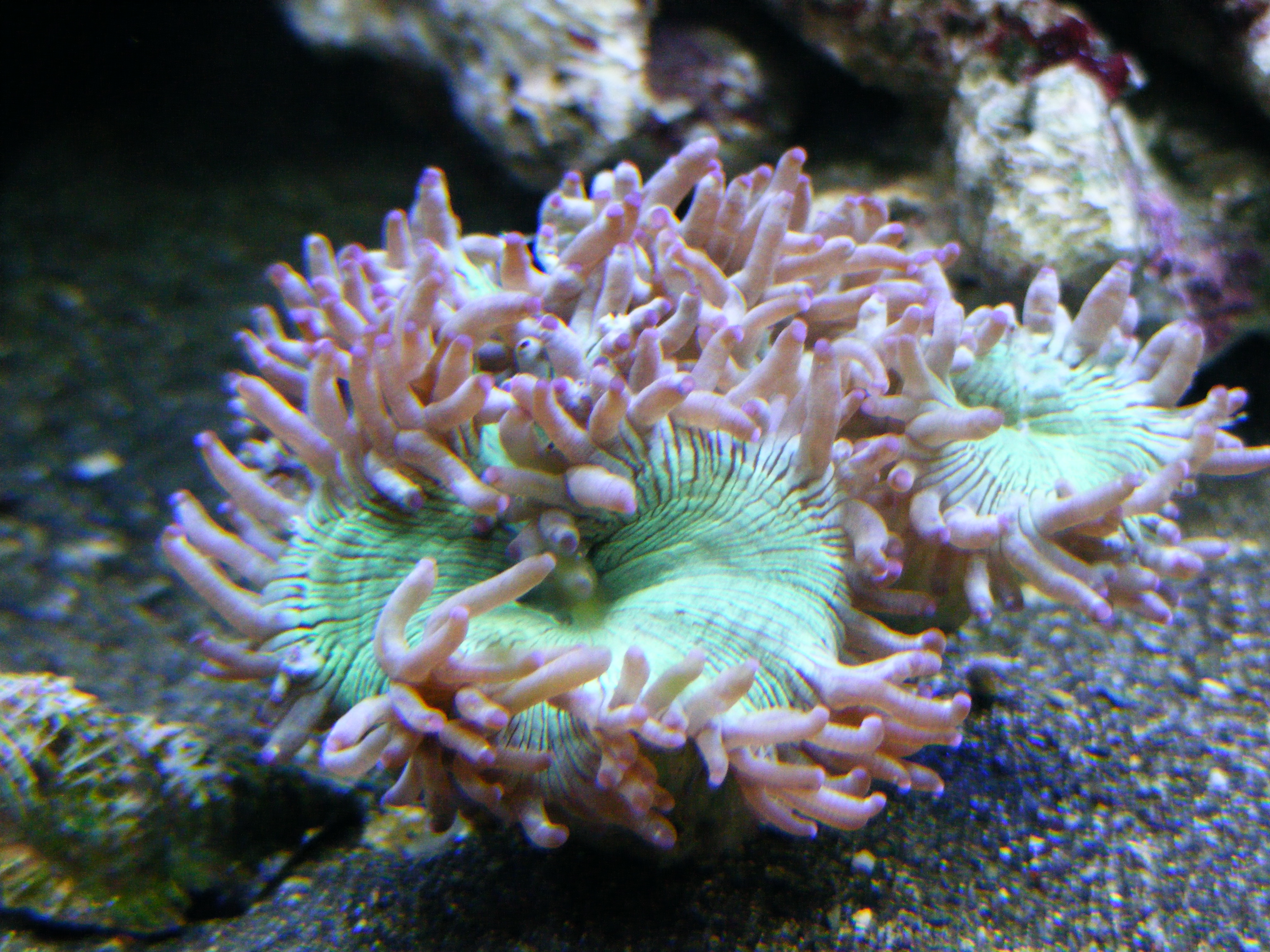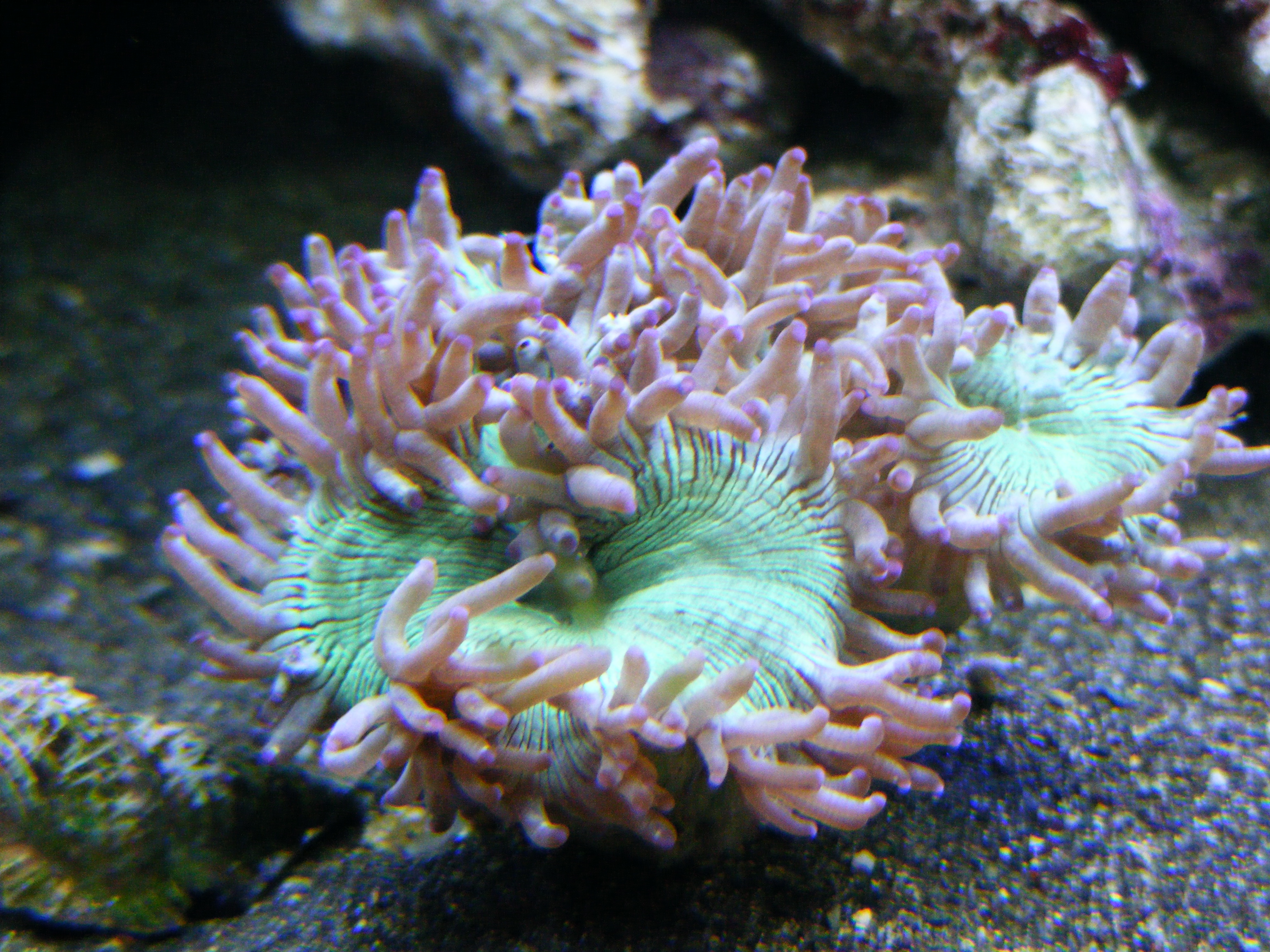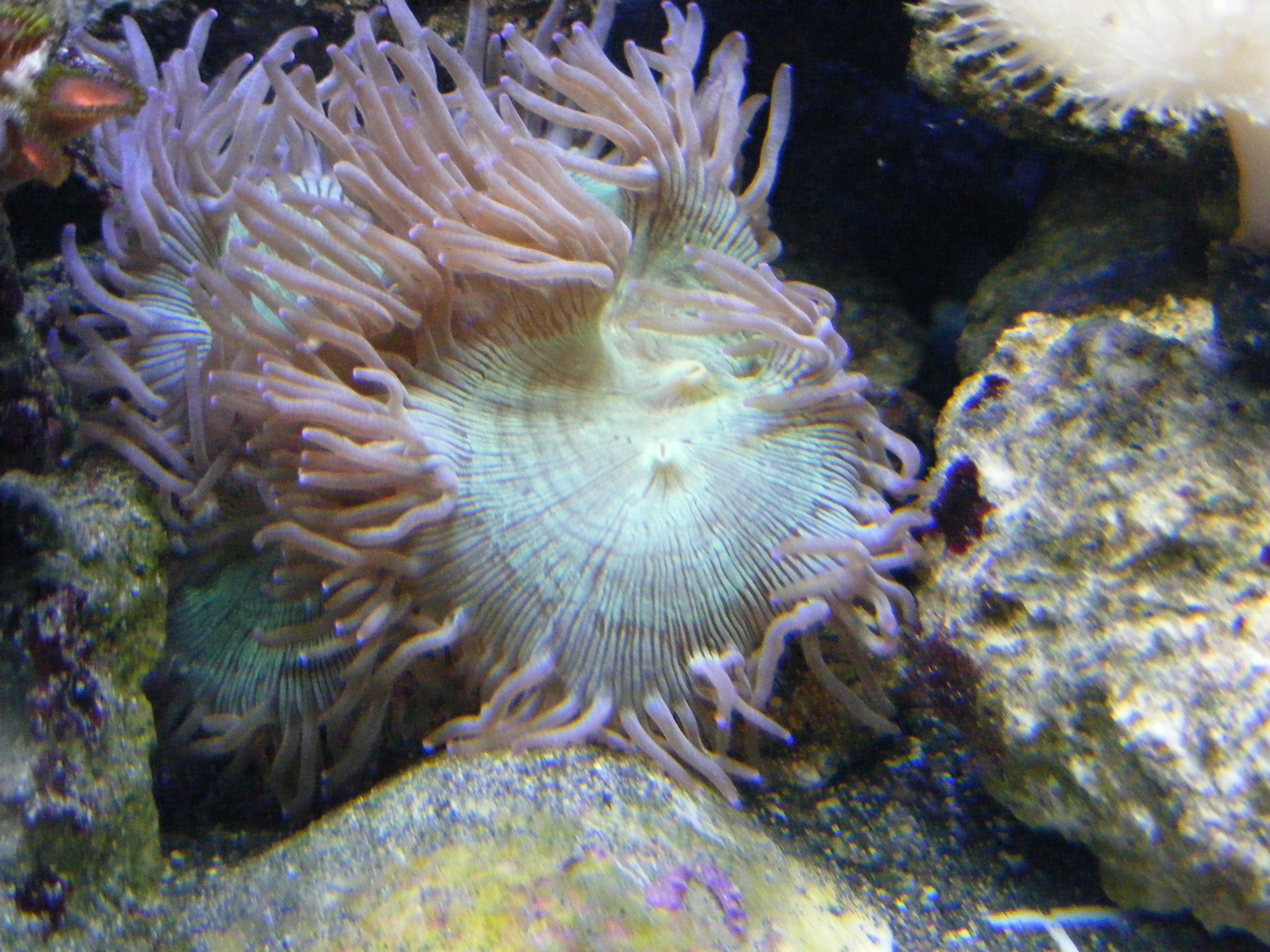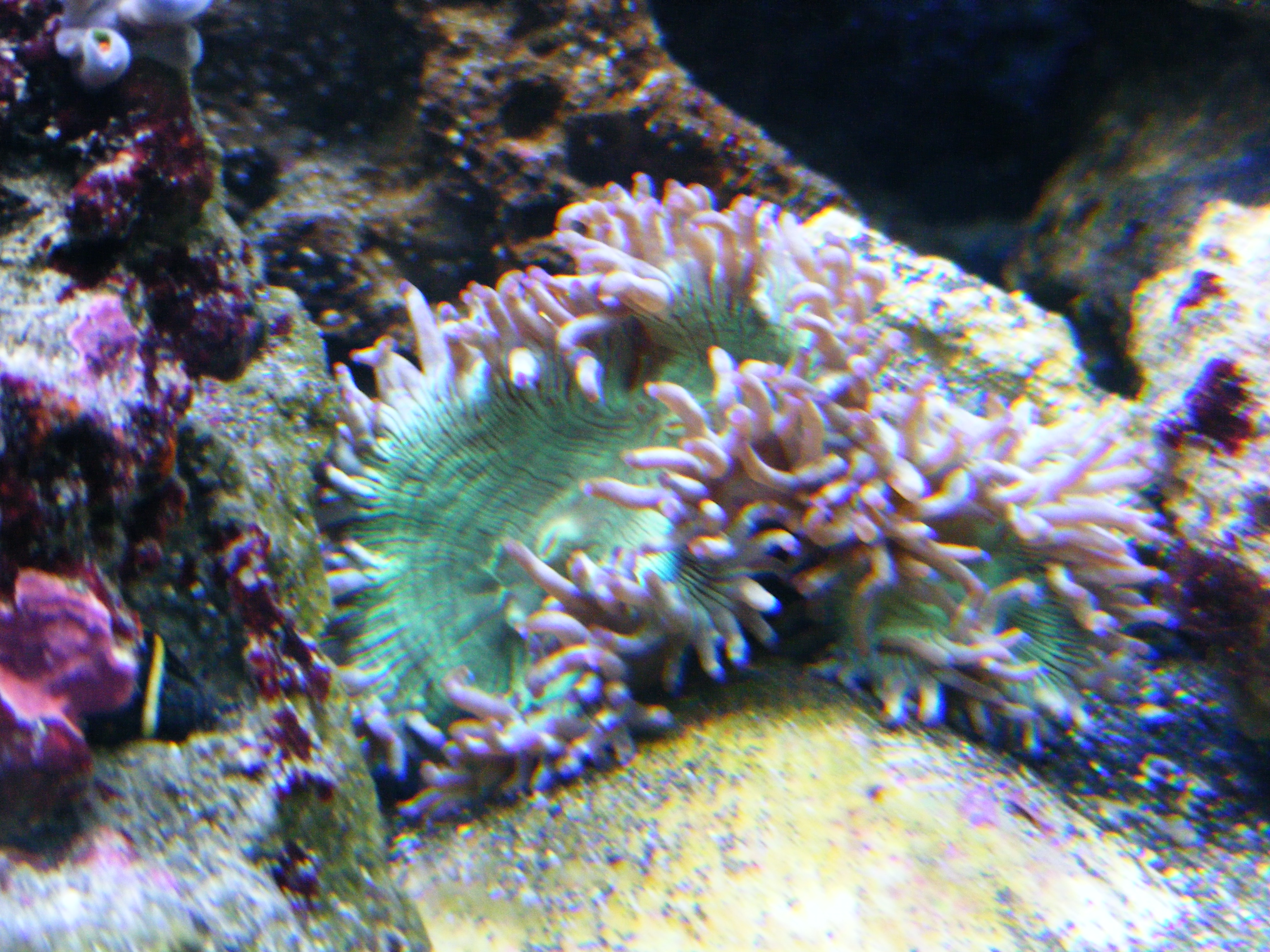From Bob Fenner
"The Waikiki Aquarium (Oahu, Hawai’i) has probably the best specialized "Elegance Coral Tank" I’ve ever seen. Let me describe this set-up for you (all
It has a few inches of fine sand, a bunch (really too many, I'd clear some so you could see the coral specimen) "seagrass" (in their caseThalassia hemprichii) a few fishes (a Phalaena goby, gorgeous green filefish, unid'ed rockfish of some sort), not much circulation, no added aeration, but bright light (the plants and algae were giving off obvious gas bubbles from the halides and sunlight (the roof is "missing")... and the specimen? It is alone, by itself, lying in the "mud/sand" horizontal on the bottom
Now, let me assure you, I've collected this (and other) Caryophyllid (the family of this, the Euphyllias like Frogspawn, hammer...) corals in the wild, and this is how all Elegance corals I've seen live: Horizontal, in relatively stagnant, grassy areas, with bright light, low circulation, with no other stinging celled animals around, in probably "high nutrient" settings
And how do aquarists by and large try to keep Catalaphyllias? In vertical orientations, with brisk, constant circulation, in almost nutrient-free water, with other aggressive stinging-celled animals...
Now, does all this make more/better/any sense? These animals are being kept in barely to un-tolerable conditions. They don't live in environments like your other corals at all. The places where I've seen them live are more like their wild conditions..."










